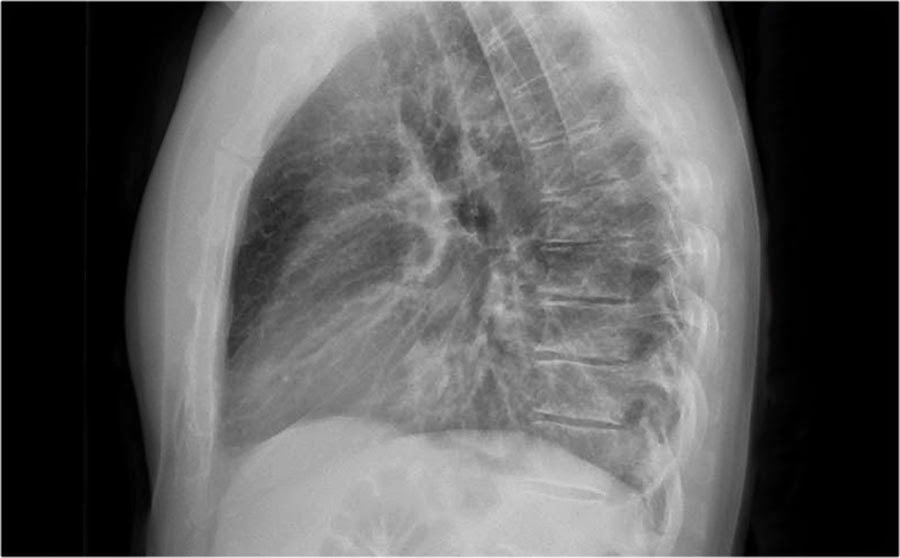- Air fluid level
- Air fluid level in esophagus = esophageal stasis
- Intrapulmonary cavity with air fluid level - upper walls must be visible
- Hydropneumothorax = indistinct upper walls with different 'shape' of air fluid levels in PA and lateral view ( lower level can be outlined by the curved minor fissure )
- Thymoma can regularly metastasize to pleural layers
- Any opacity in diaphragm may arise below
- Lymph node with hypodense center - think about TB
- Ivory vertebrae ddx - adult - malignancy, lymphoma, Paget's disease of bone; kids - lymphoma, neuroblastoma, osteoblastoma, Ewing's sarcoma, osteosarcoma
- When the undersurface of the rib is eroded, the mass arises from the structure below the rib when it is found beneath the eroded rib
- There are 3 knobs on PA view in normal person - aortic knob, pulmonary arch and LV
- In MS, left auricle can be seen between pulmonary arch and LV
- A bulging pulmonary arch suggests PAH
- 3 ddx of bulging pulmonary arch
- Enlarged hilum + abrupt tapering of the vessels - PAH due to lung diseases or heart failure
- Enlarged hilum + increased vascularity seen in PA film - left to right shunt
- Normal or decreased vascularity without enlarged hilum - congenital pulmonic stenosis
- Kerley lines - A line, B line and C line
- Look for Kerley lines when u see reticular pattern
- If CHF can be excluded, another ddx for Kerley line is lymphagitis carcinomatosis
- Aspiration due to achalasia normally goes to right apical lobe !!
- Upper lobe redistribution in hemithorax - CHF, MS or PE
- Hematoma can be suspected by seeing increased density of the mass in CT scan ( same as blood in LV )
- ABPA - tree in a bud pattern, can cause mucous impaction and lobar collapse
- PseudoPTX - the vessels will cross the pseudopleural line !!
- Oreo cookie sign - first layer - lung, second layer - fluid, third later - epicardial fat pad, diagnostic of effusion
- Lytic lesion in lung - MM, renal and thyroid cancer, blastic lesion ( Ivory rib ) - prostate cancer
- Air crescent sign - aspergilloma; water lily sign - hyatid cyst
- Know how to differentiate bullae vs pneumothorax
- Double density sign on aortic arch suggests a posterior mediastinal mass hiding behind the aorta
- Bronchiectasis can be cystic or cylindrical lesion
- Air below right diaphragm - pneumoperitoneum, pneumobilia ( Rigler's triad ), emphysematous cholecystitis and Chilaidit's syndrome



















.png)











.jpg)

















